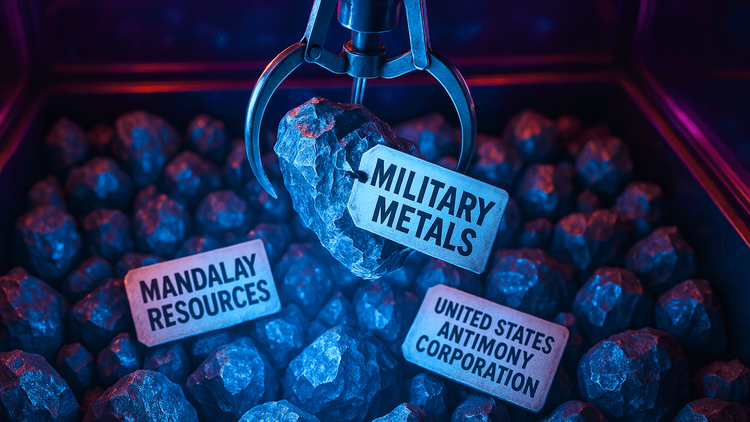Amazon: $ 21 Billion Stake in Rivian
Bet that innovations can help solve climate change

Amazon's big bet on Rivian Automotive paid off this week as the electric vehicle startup made an explosive public debut.
Rivian raised nearly $ 12 billion in the gigantic IPO and achieved a proud valuation of more than $ 110 billion, higher than the auto giants GM and Ford. The IPO was a huge boom for Amazon, the more than $ 1.3 billion in Rivian invested. Amazon's 20 percent stake in the company is now worth more than $ 21 billion.
Rivian's IPO was a huge financial success for Amazon. It is also key to one of the company's most demanding missions - reducing our environmental footprint.
Amazon has long been criticized for not acting fast enough to reduce its environmental footprint. More than 1,000 Amazon employees went out of work in 2019 to urge the company to do more to fight climate change after filing a shareholder motion signed by thousands of employees.
In 2019, Amazon's founder and CEO Jeff Bezos unveiled a far-reaching plan to transform the company's climate policy on stage, promising that Amazon will be carbon neutral by 2040. He also announced that Amazon has ordered 100,000 Rivian electric delivery vans to be delivered by 2030. Amazon hopes to get 10,000 of them on the streets as early as next year.
These goals are largely at odds with the current reality of Amazon. As the country's largest online retailer, Amazon delivers more than 10 billion items a year around the world using an extensive network of gasoline-guzzling planes, delivery vans, trucks and ships. In an effort to accelerate deliveries from two days to increasingly one day, and in some cases even within hours of ordering, the company has taken much of its shipping operations in-house and covered the entire country with warehouses.
Bezos has previously stated that same-day or within-day deliveries can lead to a reduction in emissions by reducing reliance on aircraft, while locating warehouses close to customers means that vans can help deliver packages Can cover shorter distances, as reported by the Washington Post.
According to the Environmental Protection Agency, the transportation sector remains the largest source of climate pollution in the US as it is responsible for 29% of the country's total greenhouse gas emissions.
Last year, when the e-commerce giant's business was boosted by a pandemic, its carbon emissions also rose 19%. Emissions per dollar of sales decreased by 16% through 2020.
In order for Amazon to move forward in its decarbonization efforts, the company must continue to invest in and deploy new transportation technologies. One way to do this is through the $ 2 billion Climate Pledge Fund, which Amazon is using to invest in startups that are developing technology that can help meet its climate goals.
Amazon's acquisition of Zoox last year for more than $ 1 billion is another bet on electrification. Zoox has developed a fully electric, fully autonomous vehicle suitable for ride hailing.
The company has tested prototypes of its self-driving vehicle in San Francisco and Foster City in California, Las Vegas and, since last month, in Seattle. The company has also set up an office in Seattle, although Zoox and Amazon continue to operate separately.
In the future, both Rivian vans and Zoox self-driving vehicles could fit into Amazon's extensive logistics network by making the transport and delivery of goods cheaper, faster and greener.
But running on electricity isn't necessarily a necessity for Zoox, said Bilal Zuberi, partner at Lux Capital.
"You could have a vehicle with an internal combustion engine or it could be an electric vehicle," Zuberi said. Amazon's primary strategy behind investing in Rivian has been to be ahead of the coming wave of electric vehicles and have a piece of it, "he added.
It is unclear whether autonomous vehicles have a significant impact on the environment. Proponents of the technology say self-driving cars will reduce traffic congestion and encourage the growth of ridesharing, which could mean people will make fewer trips in their own cars. Others argue that self-driving cars could result in more people using the car to get around, which would lead to greater pollution.
Amazon has already placed other major bets on autonomous vehicles. In 2019, the company invested $ 530 million in self-driving auto start-up Aurora as part of a financing round.
Earlier this year, Amazon ordered 1,000 autonomous driving systems from the self-driving truck start-up Plus and, as part of the deal, was given the option to acquire a 20% stake in Plus. The company also tested the transport of goods with Embark's self-propelled trucks.
Amazon recognized that we are at the dawn of a decade-long shift in mobility, and autonomous driving will play a huge role in that, as will electric mobility, "said Asad Hussain, senior mobility analyst at financial data firm Pitchbook." I think so Amazon is betting on all of these innovations and making sure they get involved in areas where they may help their core business in the future. "
Amazon has also developed its own Scout delivery robot, a small six-wheeled electric vehicle. And the company is increasingly turning to micromobile delivery options in dense, urban areas, such as B. electric cargo bikes.
Amazon's interest in decarbonization isn't limited to its on-site transportation systems.
In May, Amazon's Climate Pledge Fund invested $ 368 million in Beta Technologies, which is building an electric aircraft. Amazon has also supported startups developing hydrogen-powered aircraft and carbon-free diesel and jet fuels.
Amazon, which runs a huge shipping business, committed last month to moving to carbon-free fuels for ocean freight by 2040.






